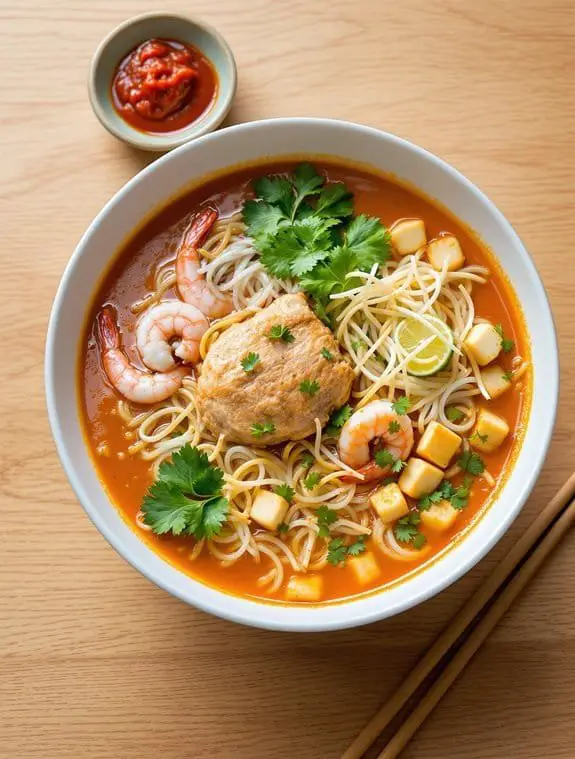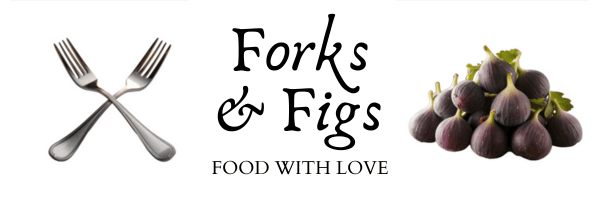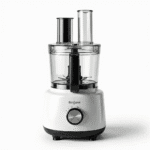Singaporean Laksa Curry Recipe

I’ll be honest with you – I used to think making authentic Singaporean laksa was way too complicated for my weeknight dinner routine. All those exotic ingredients, the spice paste from scratch, that perfect coconut broth balance? Seemed like something I’d only order at restaurants. But here’s what I discovered: this incredible soup is actually more forgiving than you’d expect, and once you understand the basic technique, you’ll wonder why you waited so long to try it.
Why You’ll Love this Singaporean Laksa Curry
Whether you’re craving something comforting on a rainy day or need to impress dinner guests with minimal effort, this Singaporean laksa curry delivers pure magic in a bowl.
I’m talking about rich, coconut-infused broth that’ll make you forget takeout exists. The aromatic paste transforms simple ingredients into something extraordinary, while the spice blend creates layers of flavor that dance on your tongue.
What makes this special? It’s forgiving. Mess up the paste slightly? Still delicious. Can’t find galangal? Ginger works.
Plus, you can prep everything ahead and simply assemble when ready to serve.
What Ingredients are in Singaporean Laksa Curry?
The beauty of Singaporean laksa curry lies in its complex layering of aromatics and spices, creating a symphony of flavors that would make any street vendor proud.
While the ingredient list might look intimidating at first glance, most of these items can be found at your local Asian grocery store, and many have simple substitutes if you’re in a pinch.
Think of this recipe as your passport to Southeast Asian flavors without needing a plane ticket. Each ingredient plays a specific role in building that signature laksa taste – from the earthy dried chilies that form the base to the pungent belachan that adds that unmistakable umami depth.
Essential Ingredients:
- 15 g mild dried chilies
- 3 tbsp dried shrimp
- 2 Thai chilies
- 8 cloves garlic
- ½ cup shallots
- 2 stalks lemongrass (white part only)
- 1 tbsp turmeric powder or fresh turmeric
- 1 tbsp galangal (blue ginger)
- 2 candlenuts (or substitute cashew nuts)
- 1 tbsp belachan (fermented shrimp paste)
- 4 cups chicken stock
- 1 can (400 ml) coconut milk
- 4 skin-on chicken thighs
- 1 tbsp fish sauce
- Rice vermicelli or egg noodles
- Shrimp for topping
- Tofu puffs
- Bean sprouts
- Fresh cilantro
- Lime wedges
Ingredient Notes and Substitutions
Don’t panic if you can’t locate galangal – regular ginger works perfectly fine, though you’ll miss some of that distinctive piney note that galangal brings.
The same goes for candlenuts, which cashews can easily replace without anyone being the wiser.
Belachan might smell like low tide when you open the jar, but trust the process. This fermented shrimp paste is what separates authentic laksa from coconut soup with noodles.
You can find it in most Asian markets, usually in small blocks or jars.
For the chilies, look for guajillo or New Mexico dried chilies if you’re shopping at a regular grocery store. They provide that essential earthy heat without setting your kitchen on fire.
And yes, you absolutely need both types of chilies – the dried ones for depth, the fresh Thai chilies for that bright kick.
The noodle choice comes down to personal preference, though rice vermicelli gives you that classic laksa experience.
Thick rice noodles or even ramen work in a pinch, just adjust cooking times accordingly.
How to Make this Singaporean Laksa Curry

Now comes the fun part – actually making this aromatic masterpiece. I won’t lie, there’s a bit of chopping and blending involved, but once you get that paste going, you’re basically home free. Think of it as meditation through food prep, except you’ll smell like a Southeast Asian spice market afterward.
Creating the Spice Paste
Start by soaking your 15 g of mild dried chilies in warm water for about 15 minutes until they’re soft and pliable. While they’re taking their little spa bath, gather up your 8 cloves of garlic, ½ cup of shallots, 2 stalks of lemongrass (white parts only), 1 tbsp of turmeric powder, 1 tbsp of galangal, 2 candlenuts, 1 tbsp of belachan, 3 tbsp of dried shrimp, and those 2 Thai chilies. Drain the soaked chilies and toss everything into a food processor or blender.
Blend until you’ve got a smooth paste that looks like it could paint your kitchen walls orange. This might take a few minutes, and you may need to scrape down the sides once or twice. The mixture should be fragrant enough to make your neighbors wonder what magical thing you’re cooking.
Building the Base
Heat a generous glug of oil in a large pot or wok over medium heat. Add your beautiful spice paste and sauté it for about 5-7 minutes, stirring constantly so it doesn’t burn and ruin all your hard work. You’ll know it’s ready when the paste darkens slightly and your kitchen smells like heaven merged with a spice bazaar.
Nestle your 4 skin-on chicken thighs into the fragrant paste and brown them lightly on both sides. The skin doesn’t need to be crispy – we’re just giving the chicken a head start and letting it mingle with those spices.
Simmering to Perfect
Pour in your 4 cups of chicken stock, making sure to scrape up any delicious bits stuck to the bottom of the pot. Bring everything to a gentle simmer and let it bubble away for 20 minutes. This gives the chicken time to cook through and allows all those flavors to get properly acquainted.
Next comes the 1 can of coconut milk and 1 tbsp of fish sauce. Stir them in gently – coconut milk can be a bit dramatic and might curdle if you’re too aggressive with it. Let everything simmer together for another 10 minutes, and try not to taste-test yourself into a food coma.
Bringing It All Together
While your curry is doing its thing, cook your noodles separately according to package directions. Rice vermicelli usually just needs a hot water bath, while egg noodles might need a quick boil. Keep them slightly undercooked since they’ll continue softening in the hot curry.
Divide the cooked noodles between serving bowls, then ladle that gorgeous, coconut-rich curry right over the top. The chicken thighs can be removed, shredded if you prefer, and added back in, or just left whole for people to tackle with their spoons.
The Final Flourish
Top each bowl with cooked shrimp, tofu puffs, a handful of fresh bean sprouts, and a generous sprinkle of cilantro. Don’t forget those lime wedges – the bright acidity cuts through all that rich coconut and brings the whole dish into perfect balance.
Some people like to add a soft-boiled egg or some sliced fish cake, but honestly, you’ve already created something pretty spectacular.
The best part about laksa is that it’s almost impossible to mess up once you’ve got that spice paste right. Too thick? Add more stock. Not quite flavorful enough? Another splash of fish sauce usually does the trick.
Singaporean Laksa Curry Substitutions and Variations
Let’s be honest – not every kitchen is stocked with galangal and candlenuts just sitting around waiting for their moment to shine.
Can’t find galangal? Fresh ginger works perfectly fine. I promise the laksa police won’t come knocking.
Cashews make excellent candlenut substitutes, and honestly, they’re easier to crack anyway.
No belachan? Try anchovy paste or even Worcestershire sauce in a pinch.
Swap chicken thighs for prawns, fish, or tofu for different protein vibes. Rice vermicelli’s traditional, but egg noodles work beautifully too.
Want it spicier? Add more Thai chilies.
Milder? Skip them entirely.
What to Serve with Singaporean Laksa Curry
Pairing up your laksa with sides might seem unnecessary when you’ve got such a complete dish, but trust me, the right accompaniments turn this from dinner into an absolute feast.
I like keeping things simple with classic Malaysian sides. Crispy prawn crackers add that satisfying crunch against the silky broth.
Pickled vegetables, especially cucumber and radish, cut through all that rich coconut milk beautifully.
Want something more substantial? Roti canai works perfectly for dipping and scooping. Fresh spring rolls bring lightness to balance the curry’s intensity.
And honestly, a cold Tiger beer never hurt anyone when you’re dealing with this much spice.
Final Thoughts
While this recipe might look intimidating with its long ingredient list and unfamiliar spice paste, I promise it’s more forgiving than you’d think.
Trust me, even if your paste isn’t perfectly smooth or you can’t find galangal, you’ll still end up with something delicious.
The beauty of laksa lies in its flexibility. Can’t handle spice? Use fewer chilies. Missing candlenuts? Cashews work fine.
Your paste looks slightly chunky? Nobody will complain when they’re slurping those incredible coconut-rich noodles.
This dish rewards boldness, so don’t overthink it. Just plunge in and let those aromatic spices work their magic.

Singaporean Laksa Curry
Ingredients
For the Spice Paste:
- 15 g mild dried chilies
- 3 tbsp dried shrimp
- 2 Thai chilies
- 8 cloves garlic
- ½ cup shallots
- 2 stalks lemongrass white part only
- 1 tbsp turmeric powder or fresh turmeric
- 1 tbsp galangal blue ginger
- 2 candlenuts or cashew nuts
- 1 tbsp belachan fermented shrimp paste
For the Soup:
- 4 cups chicken stock
- 1 can 400 ml coconut milk
- 4 skin-on chicken thighs
- 1 tbsp fish sauce
- 2 tbsp cooking oil
For Serving:
- Rice vermicelli or egg noodles
- Cooked shrimp
- Tofu puffs
- Bean sprouts
- Fresh cilantro
- Lime wedges
Instructions
- Soak dried chilies in warm water for 15 minutes until softened, then drain.
- In a food processor, blend soaked chilies with dried shrimp, Thai chilies, garlic, shallots, lemongrass, turmeric, galangal, candlenuts, and belachan into a smooth paste.
- Heat oil in a large pot over medium heat and sauté the spice paste for 5-8 minutes until fragrant and oil separates.
- Add chicken thighs to the pot and brown lightly on both sides, about 3-4 minutes per side.
- Pour in chicken stock and bring to a boil, then reduce heat and simmer for 20 minutes.
- Add coconut milk and fish sauce, then simmer for another 10 minutes until chicken is fully cooked.
- Meanwhile, cook noodles according to package instructions, drain, and divide among serving bowls.
- Remove chicken thighs, shred the meat, and return to the pot.
- Ladle the hot curry over noodles and top with shrimp, tofu puffs, bean sprouts, cilantro, and lime wedges.
Notes
Nutrition
Frequently Asked Questions
How Long Can Leftover Laksa Curry Be Stored in the Refrigerator?
I’d recommend storing your leftover laksa curry in the refrigerator for up to three days maximum. I always transfer it to airtight containers and reheat thoroughly before serving to guarantee food safety.
Can This Recipe Be Made in a Slow Cooker or Instant Pot?
I’ll adapt this for both appliances. For slow cooker, I’d use low heat for 4-6 hours, adding coconut milk in the final hour. For Instant Pot, I’d pressure cook 15 minutes then add coconut milk.
Is Laksa Curry Gluten-Free and Suitable for Celiac Diets?
Laksa curry can be gluten-free if I choose rice vermicelli noodles and verify my ingredients. I’ll check that fish sauce, chicken stock, and belachan don’t contain wheat for celiac safety.
What’s the Difference Between Singaporean Laksa and Malaysian Laksa Varieties?
I’ll explain the key differences between these laksa styles. Singaporean laksa features coconut milk-based curry broth with rice noodles, while Malaysian varieties include assam laksa with tamarind-sour fish broth and curry laksa with spicier coconut curry.
Can the Spice Paste Be Made Ahead and Frozen for Later?
Yes, I’d recommend making the spice paste ahead and freezing it. It’ll keep for up to three months and actually develops deeper flavors. Just thaw completely before sautéing.





